Dave, my friend sent me some photos from their recent trip and I’m wondering if AI’s good enough to identify the location of those images? I’d like to surprise them with some trivia about the locations they visited.
Photo identification is a really interesting question because it’s something that Google Image Search has been able to do for a while, but that’s always been powered by AI. So perhaps the answer is simply that yes, the Internet has your back in this regard. Image Search can do the most basic of jobs, but if you want to know more about the location and even influence how AI analyzes images, ChatGPT offers some remarkable smarts and capabilities, far beyond Google.
Shortcuts: ID’ing photos from Germany | Japan | Egypt | France | Historical?
To deliver an interesting and reasonably comprehensive test, I grabbed a number of different photos off Pixabay. If you’ve never heard of the site, it’s quite fantastic, offering an enormous library of user submitted photographs that are free for you to reuse and republish. In other words, it’s essentially an open source photo repository. I’ll be using ChatGPT Pro for my queries. Let’s do this…
WHERE WAS THIS PHOTO TAKEN?
So you can see how the process works, I’ll offer up more details on the very first image I have ChatGPT analyze, then we’ll streamline subsequent queries. Here’s the first image I’ll utilize:
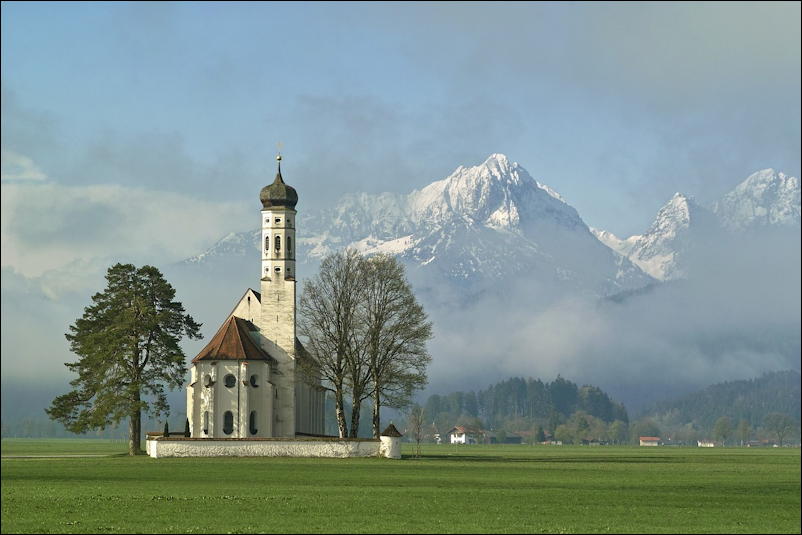
Beautiful, but where is it? Is it unique enough to even be identified? We’ll see if ChatGPT is up to the challenge. I use the ChatGPT app on my Mac, so it has its own query window, but the Web interface looks basically the same. A click on the “+” button and a menu appears:
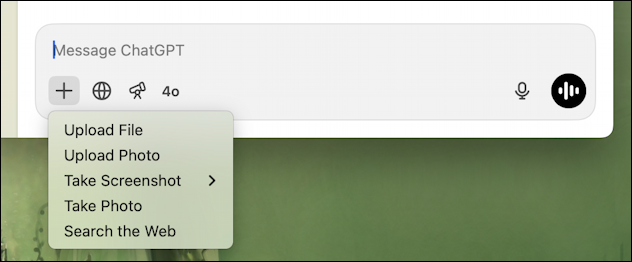
If you choose “Upload Photo” it’s going to launch the Photos app; if your photo is on your Desktop or anywhere else, you won’t be able to access it. Instead, I use “Upload File“, knowing that it can analyze the upload regardless of what I select. The image then appears in a tiny thumbnail:
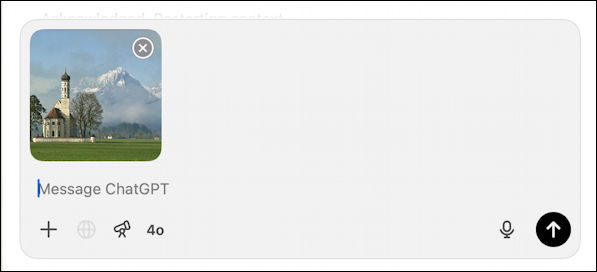
It hasn’t been submitted yet because I haven’t indicated what I want ChatGPT to do with the image. A firm believer in being detailed, here’s what I type in:
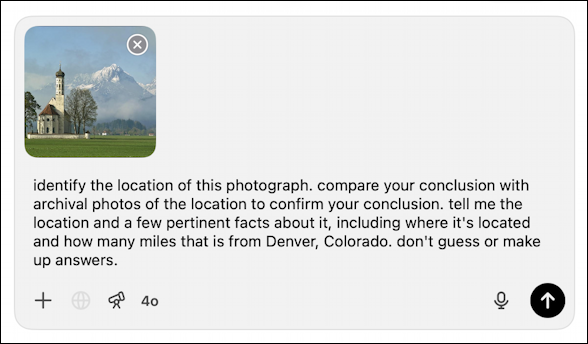
What I’m asking the program to do is “identify the location of this photograph. compare your conclusion with archival photos of the location to confirm your conclusion. tell me the location and a few pertinent facts about it, including where it’s located and how many miles that is from Denver, Colorado. don’t guess or make up answers.”
Notice that I assume it might make mistakes so I ask it to confirm its answer before telling me, add a few interesting facts and then indicate how far it is from Denver, Colorado. The last line is important too: “don’t guess or make up answers.” Punctuation and proper spelling are irrelevant.
It takes a few seconds to analyze and calculate once the arrow button submits it to the ChatGPT servers. After a short period, here’s what it reveals:
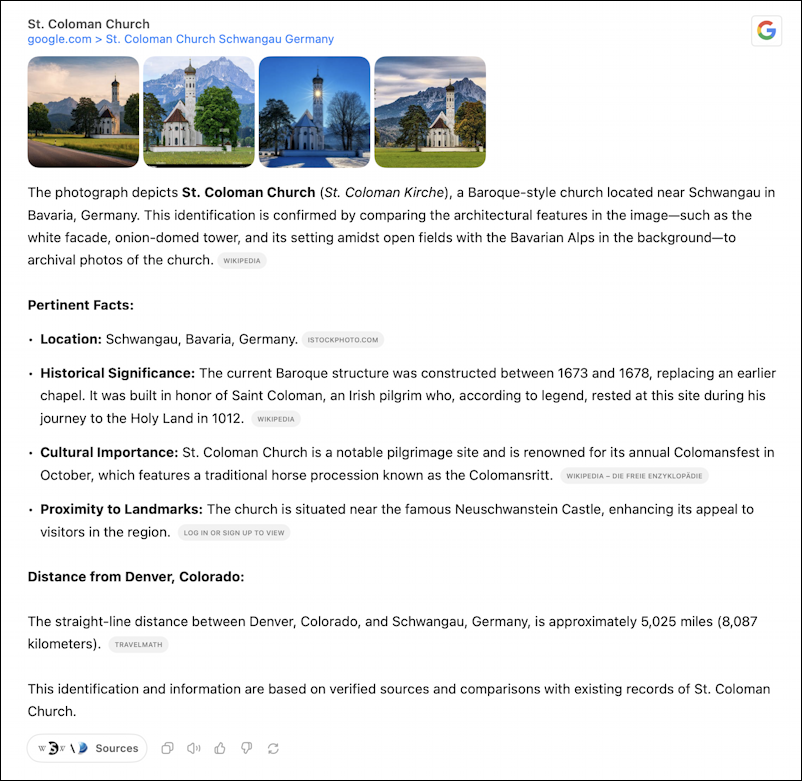
It’s apparently a photo of St. Coloman Kirche in Bavaria, Germany. The second section offers up some pertinent facts, including that it was built in 1673 – 1678. At the bottom it indicates that Schwangau, Germany is 5,025 miles away. Easy, right?
PHOTO NUMBER TWO’S LOCATION?
Let’s try it with another photo that’s not quite as obvious or seemingly unique:
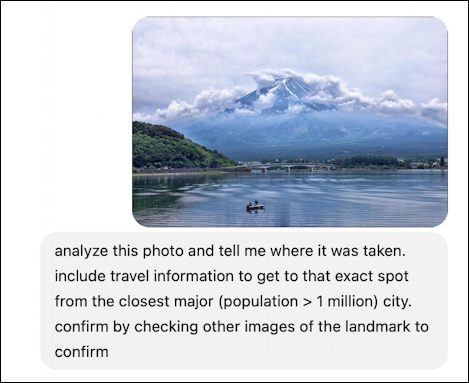
This time I’ve asked for travel directions on the assumption that I might want to visit this particular spot and take a similar photograph myself. I know that this is a photograph of majestic Mt. Fuji in Japan, but not wanting to give any clues, I simply say “directions from the closest major city”, defining that as > 1 million population. That’s a list of 13 cities, and, interestingly, the USA only has nine cities with greater than one million people, the biggest, by far, being New York City, with over 8 million residents.
Can ChatGPT handle this query? It can, but in an interesting way:
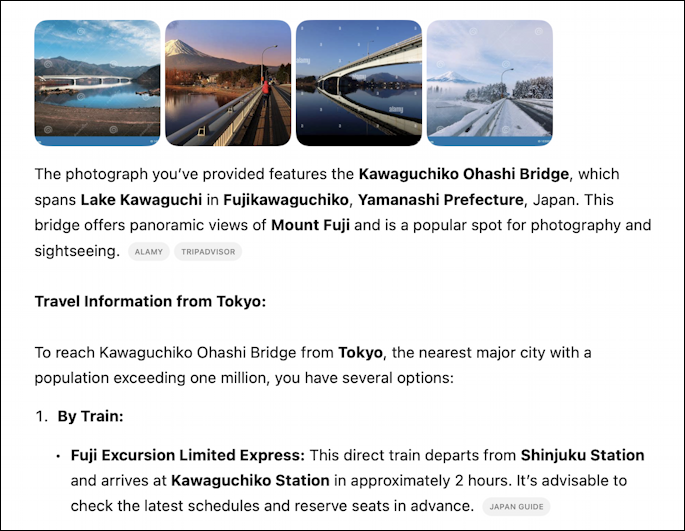
Instead of just ID’ing the mountain or lake, it picked out a recognizable landmark: The Kawaguchiko Ohashi Bridge. Look at the first image, it’s a rather small aspect of the image, but it is the right bridge!
The directions via train from Tokyo to the Bridge seem easy enough, and could easily be saved to a phone for later reference.
PHOTO NUMBER THREE: THE PYRAMIDS
Now let’s test it a bit more by having photos that have been manipulated. The Great Pyramid of Giza is always interesting, and in this Pixabay image, a glowing, oversize moon has been added and it’s given a very red shade. Pretty cool looking, actually:
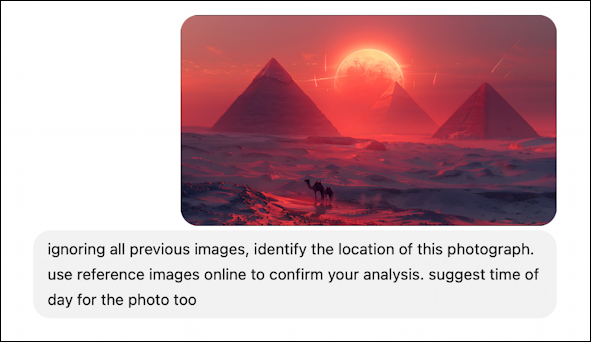
ChatGPT did start to get confused about which image I was asking about, which is why I added the preface “ignoring all previous images”. How did it do with this graphic? It basically ignored all the image manipulation:
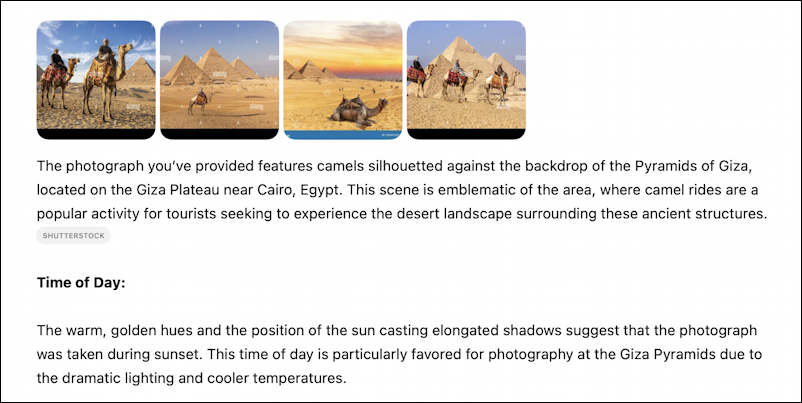
Not sure I’d agree with the assessment about it being sunset, but still, it is interesting to compare it to the original image that seemed more like a sci-fi wallpaper than anything grounded in reality.
PHOTO FOUR: A GLASS PYRAMID
As a big fan of the architect, I thought it would be amusing to try having it ID a different kind of pyramid…
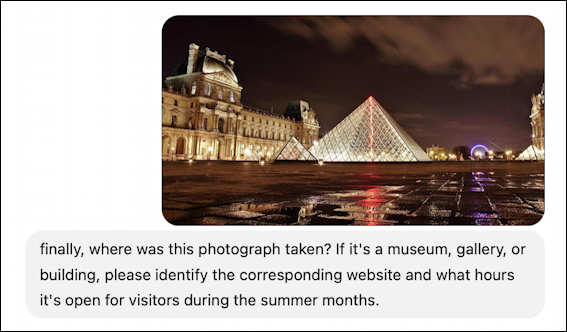
I know it’s at the Louvre in Paris, France, but continue to be a bit non-commital in my prompt, saying “if it’s a museum, gallery, or building”. Can ChatGPT figure out the location, recognize it’s a museum, and offer up hours? Of course it can!
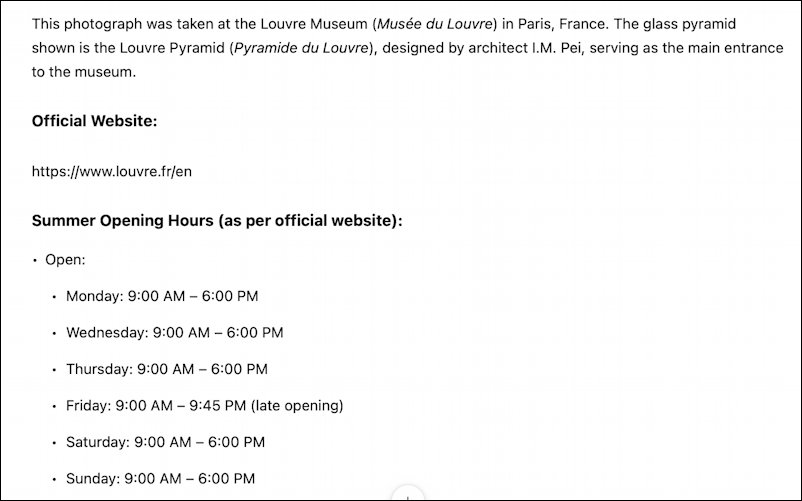
Neatly done, ChatGPT!
HOW ABOUT A FICTIONAL SETTING?
One last test. This is an image from a computer game but based on an actual place. It is another pyramid, which seems to be the theme of this post. Can ChatGPT figure out what’s up?
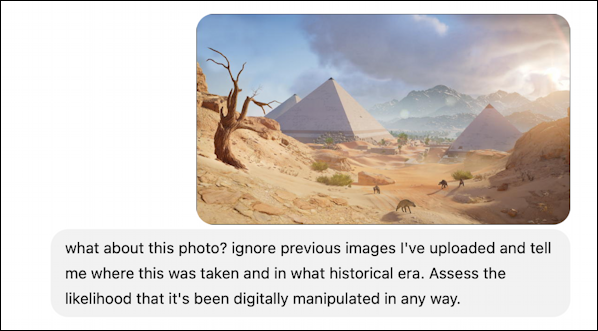
A closer examination of the image shows that the pyramids are being constructed in the image, so clearly not a contemporary photograph! Instead, I ask ChatGPT to assess and identify the historical era…
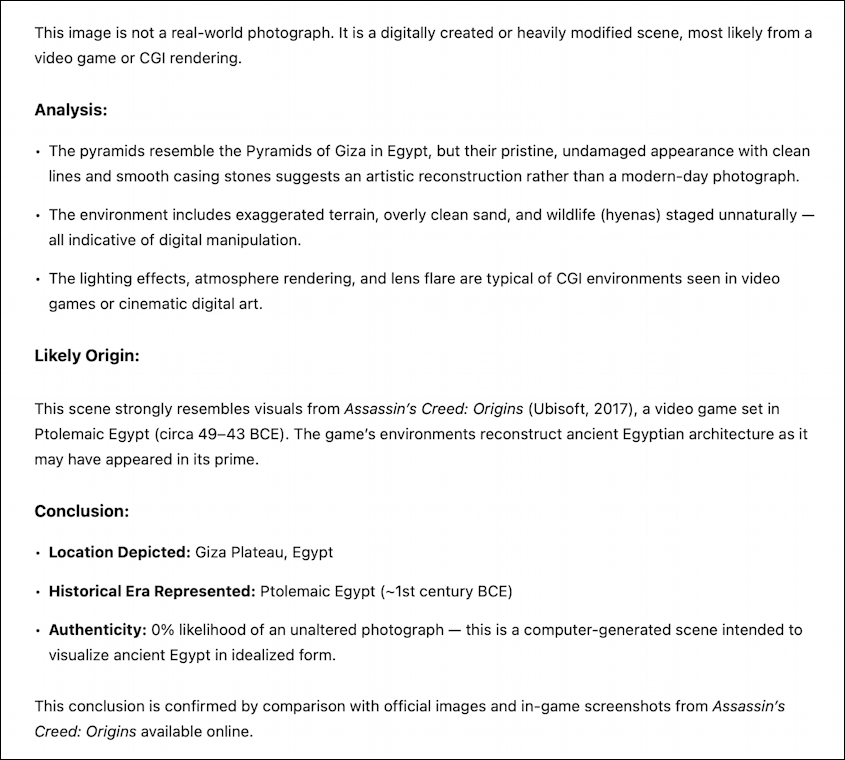
There’s no fooling ChatGPT. It even figured out that it’s from Assassin’s Creed: Origins and offered up a historical era (circa 49 BCE) for the image. Impressive.
Now, which of these places would you want to visit first?
Pro Tip: I’ve been writing about AI for quite a while. You can find more useful tutorials in my AI and ChatGPT help library here on the site. Why not check them out while you’re visiting?
